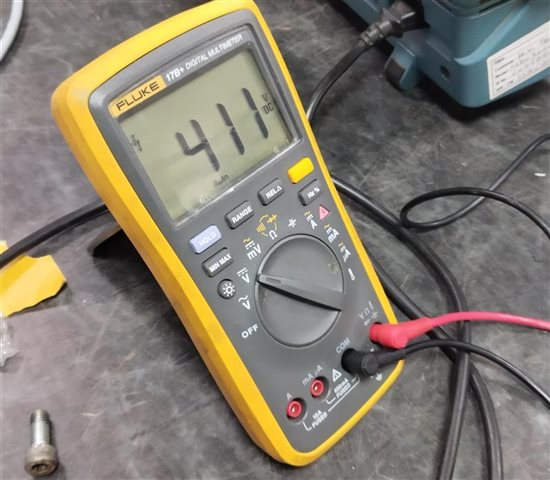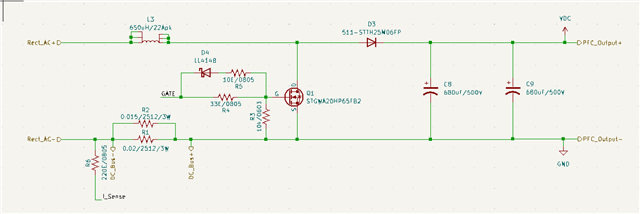Tool/software:
Dear TI Mentors,
I have designed a Boost PFC stage using the UCC28180 (8-pin) controller, targeting a maximum power rating of 1.8 kW. All component values were calculated using the TI-provided worksheet. This PFC is intended for use in a motor controller application. At this stage, I am evaluating the Boost PFC section independently to verify that it can deliver up to 1.5 kW (nominal).
Test Setup:
-
Input: AC supply, gradually increased up to 175 VAC
-
Output: Connected to the bulk capacitor (no load connected yet)
-
VCC Supply to UCC28180: Provided externally via a DC constant voltage source (CV) turned ON after reaching the the stable DC voltage — (later to be replaced with a flyback buck converter in the final design)
DC Bus Behavior:
Upon ramping the input AC to 175 VAC, the DC bus charges up to approximately 250 VDC. The Vsense pin initially reads ~3.12 V (as expected), confirming correct voltage feedback behavior. However, after about 2–3 seconds, the Vsense voltage drops to millivolt levels, even though the DC bus voltage remains at ~250 V.
My suspicion is that this could be related to the high-impedance nature of the Vsense pin or lack of load, which may be causing instability or loss of feedback.
Boosting Behavior:
I captured waveforms during startup showing the DC bus ramping up to 440 V, followed by a drop. I also captured the IGBT VCE (yellow) and inductor current (blue) during this period. The PFC operates for about 2–5 seconds, after which the DC voltage drops to Nominal Voltage.
Inductor Current Ringing:
The inductor has a value of 550 µH at 10 A, shunt - 8.6mOhm(Is it very Low). I observe significant ringing in the inductor current. Currently, no snubber is applied to the IGBT switch, assuming the no-load condition would not require it. However, I suspect that the ringing might still be contributing to instability or noise-related issues.
1. Could the Vsense voltage drop be caused by a lack of load (zero current draw), or is there a minimum impedance requirement for the feedback network that I might be missing?
2. Is the observed ringing in the inductor current a concern even under no-load conditions, and should I consider adding a snubber or damping network regardless of load state?




















